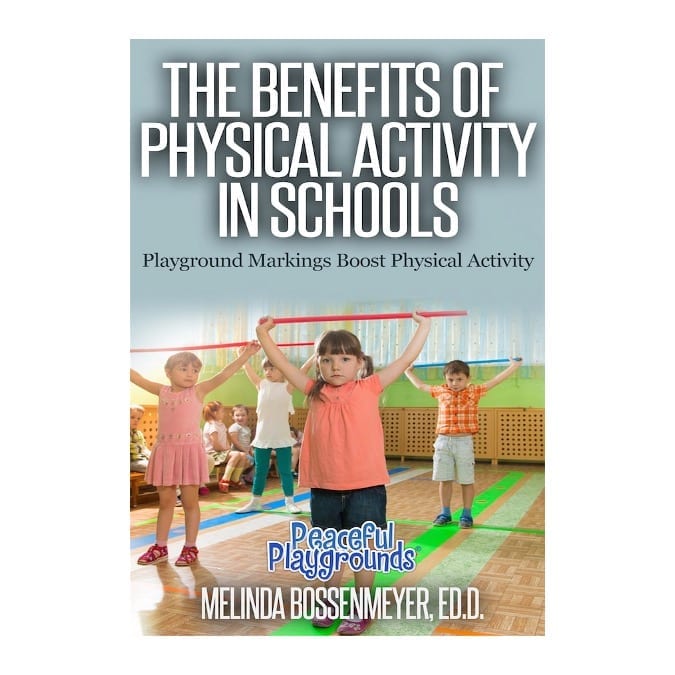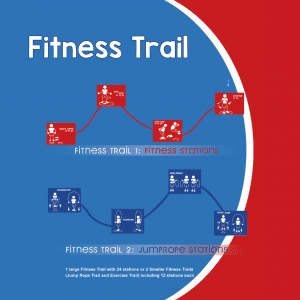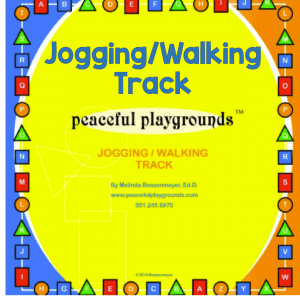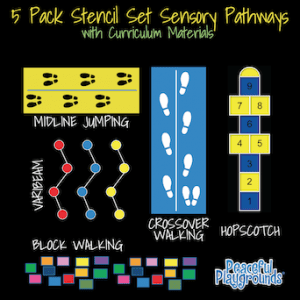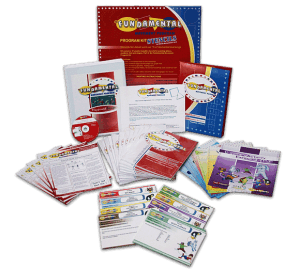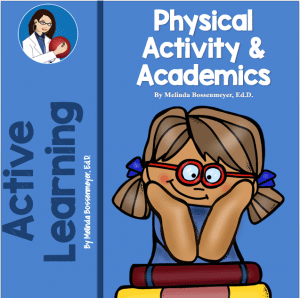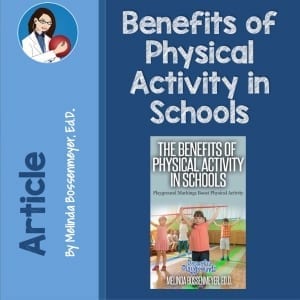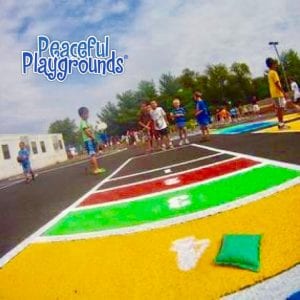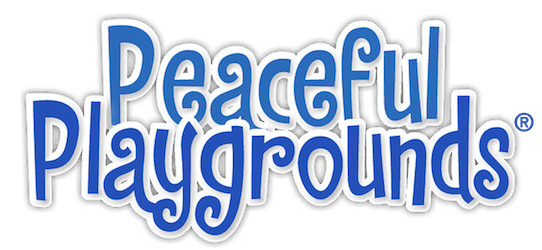The Benefits of Physical Activity in Schools
by Dr. Melinda Bossenmeyer, The Recess Doctor
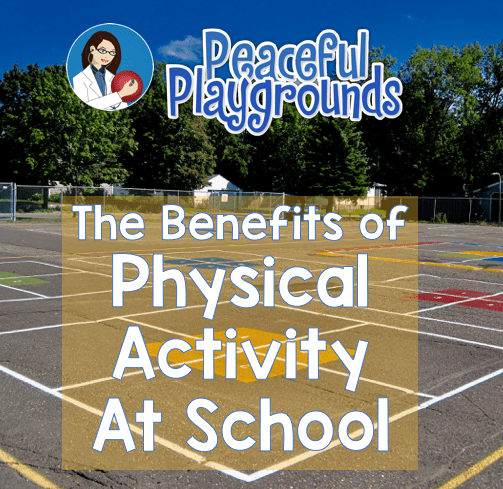
Benefits of Physical Activity in Schools
This article on “the benefits of physical activity in schools” points out other resources on the topic of physical activity.
Jogging Walking Track
Most classrooms have impulsive children. Some classes have more than one impulsive child. These children are frequently in trouble and display sincere regret for their actions… repeatedly. I wondered, “Will they ever learn?”
A new study suggests that a simple solution for the impulsive child is physical activity. Published in the Obesity Reviews, researchers identified that the brain controls inhibitory control which regulates impulsive behavior. Their research also found a link between neurocognitive functions relating to eating behaviors and exercise. In other words, physical activity in school has a positive influence on impulsive eating and actions.
In light of these findings, physical activity has two benefits schools should be interested in childhood obesity intervention, as well as, a calming effect on impulsive children.
Download the CDC Benefits of School Based Physical Activity Infographic
Physical Activity is like Medicine, according to SPARK author, John Ratey, MD we should “think of exercise as medicine.”
CDC Infographic on School-Based PA
We know that exercise helps with executive functions like sequencing, memory, and prioritizing which contribute to necessary skills for success in school and life. Put simply, physical activity in school primes the brain for learning.
Another familiar refrain from some students is “why try? I already know I can’t do it.” The defeatist attitude or inability to push past previous failures is prevalent in far too many students.
Physical activity in school is a remedy for that too. Physical activity produces endorphins (chemicals in the brain) that regulate mood, pleasure, and pain. An elevated mood can contribute to an “I can do it” attitude which goes a long way as students approach new tasks as challenges, not obstacles.
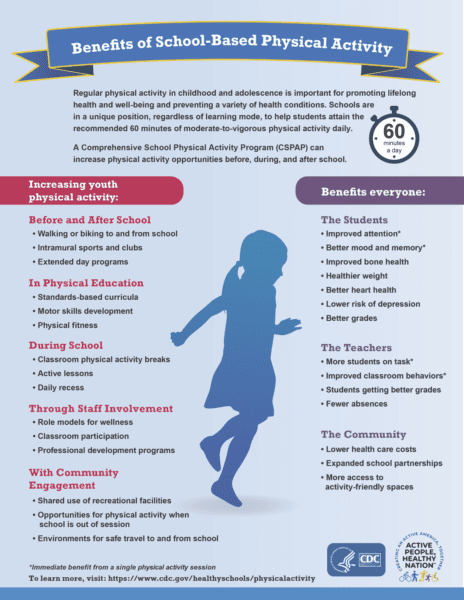
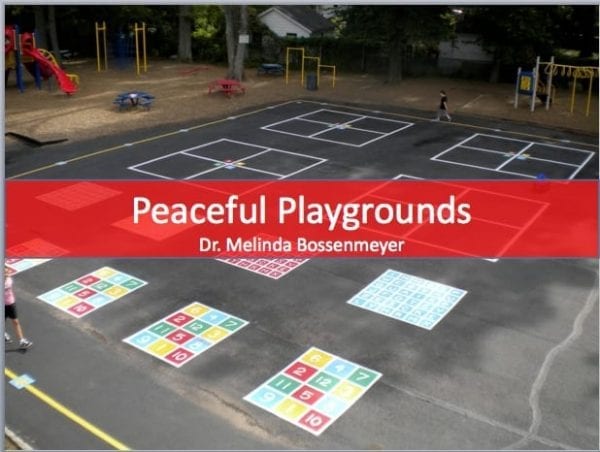

The Peaceful Playgrounds Recess Program
Peaceful Playgrounds new Walking and Jogging Track is great for getting kids moving and perfect for those days when it is too wet to run out on the field. The track was designed for elementary schools who rarely have the benefit of designated running space. Some schools have put the track on the perimeter of the blacktop playground and others have added it in a large square on one portion of the playground. The set comes with Letters, Numbers, feet, and shapes which can be added to the walking and jogging track. Contents included:Peaceful Playgrounds new Walking and Jogging Track is great for getting kids moving and perfect for those days when it is too wet to run out on the field. The track was designed for elementary schools who rarely have the benefit of designated running space. Some schools have put the track on the perimeter of the blacktop playground and others have added it in a large square on one portion of the playground. The set comes with Letters, Numbers, feet, and shapes which can be added to the walking and jogging track. Contents included:
- 40 plastic reusable stencils
- Online Support and Layout Suggestions.
- Site License
- Paint and Paint Machine
- Four Blueprints
- Four Levels of Activity Guides (Rule Books)
- Three Instructional Games DVD’s with QR Codes
- School Webinar
- Over 100 pieces of playground equipment (balls etc)
- Six Full Size Roll-Out Stencil Sets and more…….
The Peaceful Playgrounds Recess Program is in over 9000 schools across the U.S.
Peaceful Playgrounds has a variety of physical activity programs for schools including Fitness Trail, Jogging/Walking Track, Sensory Pathways Set, Peaceful Playgrounds Recess Program and the Fundamental Movement PE Program.
Healthy Child Development and Play Schools
A growing body of evidence indicates that play (ie. physical activity) has a positive effect on children’s overall health. The American Academy of Pediatrics published a Clinical Report in 2006 on the topic of play.
Importance of Play & Healthy Child Development & Parent-ChildBonds
The report offers guidelines on how pediatricians can advocate for play to ensure that play is a part of the optimal development for young children. It points out that our hurried lifestyles, emphasis on academics, and changes in family structure have resulted in a reduction in child-centered play and recess. The findings remind us that “play” plays an essential role in physical, social, academic, and emotional development in young children.
physical activity in schools materials
According to the National Association of Sport and Physical Education (NASPE) who looks at school-age sport and physical education reminds us “Opportunities to accumulate physical activity during the school day include time spent in a physical education class, classroom-based movement, recess, walking or biking to school, and recreational sport and play that occurs before, during, and after school.”
Physical Education
School physical education programs offer students the opportunity to be physically active. In addition, PE also teaches skills and behaviors conducive to maintaining physical activity for a lifetime.
Students spend over half of their day in school. Physical education should teach them how to integrate physical activity into their day both now and later in life. If not now, when? What kind of message are we sending as a society when we can’t find the time for a physical education class or offer it as an elective?
Recess
Recess and physical education are sometimes confused. When schools recently eliminated recess, parents were told that students didn’t need recess because they were receiving physical education; however, many parents fought back.
Eliminating recess is facing opposition from parents, play advocates, and, not surprisingly, children. It appears that the tide is turning and both PE and recess are viewed as essential experiences in a well-rounded education. Opportunities for Physical activity in school
Recess, unlike physical education, represents one of the few unstructured experiences of schooling. It affords children the opportunity to “play”, use their outside voices, run and chase.
Some children even garner enough courage to approach a new friend, rebuff a rival, or irritate an enemy in an animated game of tag. Notice that each is a physically active experience.
Research indicates that children are more active at recess than outside at home or even in physical education. In addition to the mental pause, recess appears to be the most effective way to keep kids active.
A study by the Robert Wood Johnson Foundation found that 42% of the nation’s schoolchildren “get most of their total daily exercise at recess – more than doing so in P.E. or after-school programs.”
Sports
Elementary students who play sports are more likely to become active teens who, in turn, are more likely to be active adults. And being active, according to the World Health Organization, is one of the most important ways to prevent heart disease, stroke, diabetes and a range of other debilitating ailments.
Not only do healthy people enjoy a higher quality of life, but the economy benefits from cost savings and productivity gains associated with workplace wellness. School sports and intramurals also have an important role in keeping children active at school.
Schools Play a Unique Role in Physical Activity Opportunities
Schools represent an advantageous opportunity to promote physical activity in children. Literally, they have a “captured audience.” The ability to carve out time for physical activity whether it recesses, physical education or sports is unique to schools alone. Since nearly 50 million students attend school is there a better place to begin to engage children in daily physical activity?
One of the best reasons for adding physical activity to children’s daily routine was documented by the America Heart Association…
“Effective efforts made now will help children avoid a lifetime of chronic disease and disability.”
Play, physical activity, physical education, recess, and sports are cherished parts of childhood. The benefits of each are at the forefront of scientific literature over the last decade. No longer can an informed parent, educator or doctor ignore the importance of each in contributing to healthy child development.
Melinda Bossenmeyer, Ed.D. is an expert witness for school supervision, playground injury cases, physical education, and coaching cases related to supervision. Professional articles by Dr. Bossenmeyer © Peaceful Playgrounds 1998 All Rights Reserved
Peaceful Playgrounds Recess Program
Fill out the form to receive more info on the Recess Program.
"*" indicates required fields

